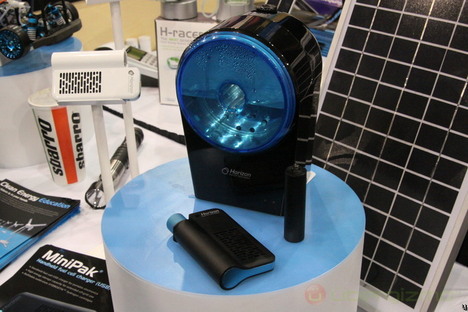The BNSF Railway Co. and Vehicle Projects Inc. rolled out the nation’s first hydrogen-powered fuel cell locomotive Monday morning at the railroad’s shops in the Oakland neighborhood.
BNSF, Vehicle Projects, Sen. Sam Brownback, R-Kan., and the Department of the Army announced plans to develop the locomotive on Jan. 9, 2008.
Funding came from BNSF and the Department of Defense, said Steven Forsberg, BNSF spokesman. In 2008, Brownback announced the Department of Defense was providing a second year of funding for the experiment — $2.4 million for fiscal year 2008 following $2 million in the previous fiscal year.
“The prototype switch locomotive has the potential to reduce air pollution, is not dependent on oil for fuel, and could serve as a mobile backup power source for military and civilian disaster-relief efforts,” a news release from BNSF stated.
Brownback was joined by Rep. Lynn Jenkins, R-Kan., in addressing a small crowd gathered Monday under a purple and white tent in front of the BNSF offices at the Topeka System Maintenance Terminal, 1001 N.E. Atchison.
“It is truly an honor to be here with Sen. Sam Brownback for this unveiling,” Jenkins said. “This is a real-world, common sense way to move forward.”
Brownback called Monday a “great day in Topeka.”
“This has been a long-storied railroad town,” he said. “This is a new story.”
After addressing the crowd, Brownback listened along with spectators as Kris Hess, of Golden, Colo.-based Vehicle Projects, gave a description of the major components of the locomotive.
Brownback then boarded the locomotive and rode up and down tracks in the BNSF yard. After the demonstration, he toured the locomotive and asked questions.
“It is extremely quiet,” he told members of the media after he disembarked. “I think this is an exciting process.”
Shawn Semple, groundsman for BNSF, rode on the front of the locomotive as it headed north in the yard. He then got off and switched the rails. “It’s very similar to diesel locomotive,” he said. “It’s very interesting.”
The locomotive will be sent to Colorado for additional testing this summer, said Chris Roberts, BNSF vice president of engineering. Then, it will be sent to California to test the viability of the technology.
“We look forward to the testing,” Roberts said. “At BNSF, we’re proud to be a part of this.”
Source: Link





